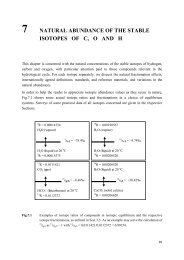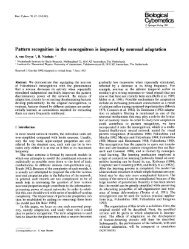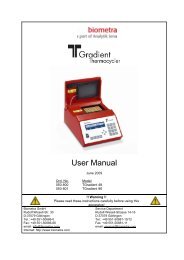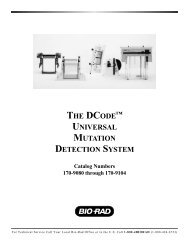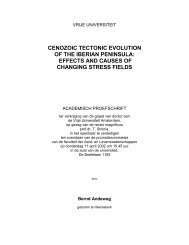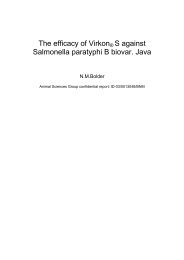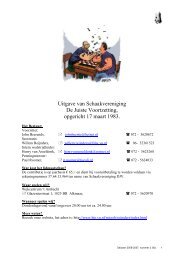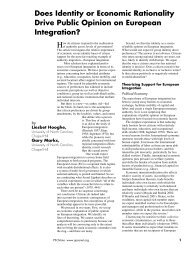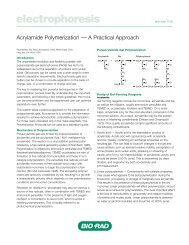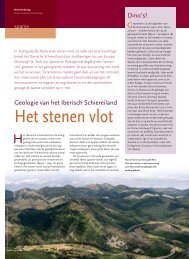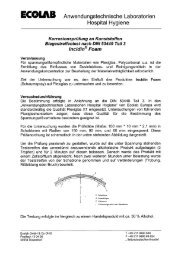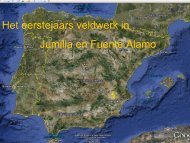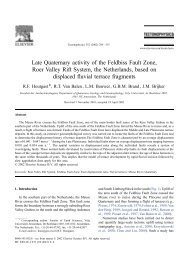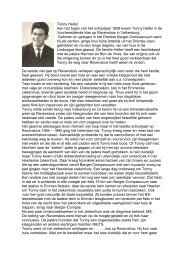DON'T PANIC - falw.vu
DON'T PANIC - falw.vu
DON'T PANIC - falw.vu
Create successful ePaper yourself
Turn your PDF publications into a flip-book with our unique Google optimized e-Paper software.
A GUIDE TO DGGE (V2) Page 26<br />
Double bands<br />
This appears to be another major complaint in the DGGE literature. Since many of the issues<br />
with double banding are a result of the PCR stage, you may want to consider:<br />
>> Longer final elongation time (5-30 minutes of 72C)<br />
>> Slow touchdown to 4C after final elongation stage<br />
>> Check primer degeneracy<br />
>> Concentration of DNA added to reaction<br />
>> number of PCR cycles.<br />
• Janse I, Bok J, Zwart G .2004. A simple remedy against artifactual double bands in<br />
denaturing gradient gel electrophoresis. Journal of microbiological methods. 57:279-281.<br />
PCR Inhibition due to humics and polysaccharides<br />
DGGE analyses can often be limited by the PCR step of the process. The PCR step can, in turn,<br />
be limited by the quality of the DNA extraction. Environmental samples rich in humic acids<br />
(organic rich soils, composts, decaying litter, etc.) and polysaccharides (biofilms, cyanobacteria,<br />
microbial mats, etc.) can contribute to poor quality DNA extracts. A lot of effort has been<br />
expended to deal with such environmental contaminants. In general, phenol/chloroform<br />
extractions and ultracentrifugation in a Cesium chloride gradient are the most effective for<br />
recovering pure DNA, these methods can be tiresome and contain toxic chemicals.<br />
For humic acids, MoBio has a very nice kit for extracting soil DNA: The MoBio “PowerSoil”<br />
DNA isolation kit. I have also noticed that you can reduce the amount of humic acids that you<br />
recover in your extracts by removing EDTA from the extraction buffer, and by repeated cleaning<br />
of the DNA with guanidine thiocyanate, or by cleanup on PVPP columns. For a reference, see<br />
the following article; I would be happy to provide a more detailed protocol if necessary. I have<br />
read that “T4Gene” 32 protein can be added to PCR reactions to reduce humic inhibition.<br />
• Inbar, E., Green, S.J., Hadar, Y. and D. Minz. 2005. Competing Factors of Compost<br />
Concentration and Proximity to Root Affect the Distribution of Streptomycetes. Microbial<br />
Ecology. 50:73-81.<br />
• LaMontagne MG, Michel FC Jr, Holden PA, Reddy CA. 2002. Evaluation of extraction<br />
and purification methods for obtaining PCR-amplifiable DNA from compost for microbial<br />
community analysis. J Microbiol Methods. 2002 May;49(3):255-64.<br />
• CC Tebbe and W Vahjen. 1993. Interference of humic acids and DNA extracted directly<br />
from soil in detection and transformation of recombinant DNA from bacteria and a yeast.<br />
Appl. Environ. Microbiol., 59(8): 2657-2665.<br />
For polysaccharides, I recommend a potassium ethyl xanthogenate method.<br />
• Tillett, D. and Neilan, B.A. 2000. Xanthogenate nucleic acid isolation from cultured and<br />
environmental cyanobacteria. J. Phycol. 36:251-258.<br />
Stefan J. Green Stefan@stefangreen.com



